How to prepare clematis for the winter?

Garden plants decorate the site, make it more beautiful, and some of them can have a positive effect on human health. In order for a culture to please the eye, bloom for a long time and grow correctly, you need to be able to properly take care of it. Many garden plants are annuals and caring for them is simple, but when growing perennial crops such as clematis, you need to know the basics of caring for them in the active phase of growth and development, as well as the rules for preparing for the winter season.
Basic rules of preparation
Clematis are very beautiful plants with bright flowers that decorate any garden and fit perfectly into any floral arrangement. BLarge flowers, rich colors make clematis desirable in any garden and in any area, however, behind their excellent appearance, the capricious nature of the plant itself is hidden, which does not tolerate cold weather and needs specific care for this period.
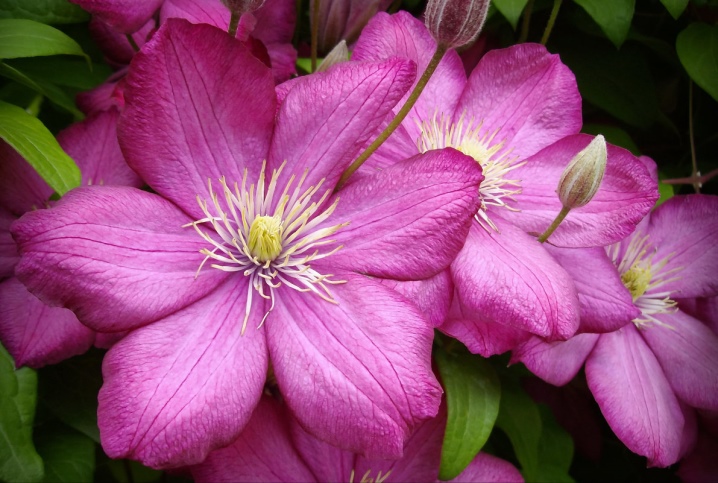
To prepare the plant for winter, you need to start working at the end of summer. Care in the fall involves activities such as:
- complete rejection of nitrogen fertilizers to stop growth;
- mandatory application of phosphorus-potassium fertilizers to prepare clematis for winter;
- pruning the crop after lowering the temperature to +10 degrees.
Pruning is a must and is done differently for different clematis varieties.
It is only necessary to cover the plant when the cold weather is finally established. The wintering period will end only with the onset of the thaw and the first warmth. It is not recommended to immediately open the plant, it is better to periodically air it, gradually removing the layer of mulch from the bush. Clematis may die after wintering if it was not properly covered in the fall.

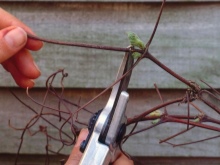
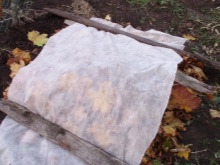
The weakest part of this plant is the root system, which suffers most from the incompetent human handling of it. If the soil is waterlogged in winter, then the roots are likely to rot, if conditions are not created for oxygen access, then the bush will also not survive. To avoid negative consequences, you need to ensure that moisture does not get under the clematis in the fall, and use peat, humus or compost during hiding. If none of this is present, then you can cover the bush with ordinary earth. It is important to fill in enough soil so that any frost does not reach the roots.
The height of the mound should be about 60 cm, provided that snow falls in winter and creates additional protection, otherwise you need to build a box, fill it with foliage, strengthening the existing protective layer on the eve of severe frosts.
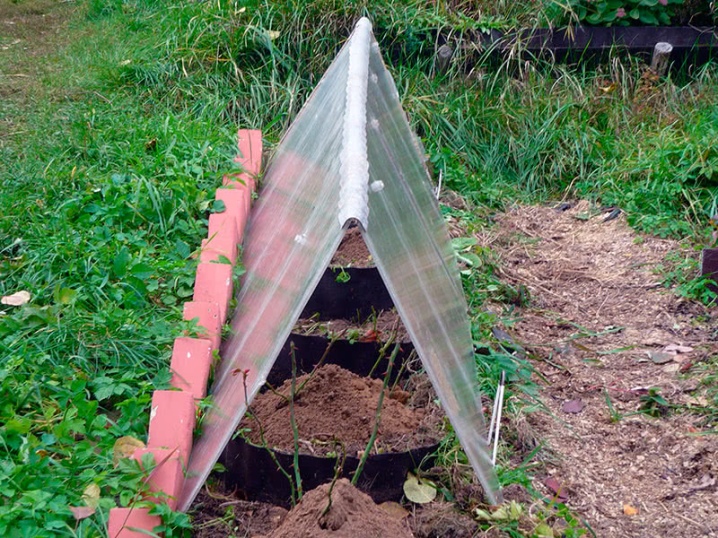
Pruning features
To properly trim clematis, you need to know which of the three groups does it belong to.
- A plant that blooms only on shoots grown this year. In this case, the pruning is complete, which makes it possible to fully prepare the bush for winter. This group includes such varieties as "Zhakmana", "Vititsella", "Integrifolia".
- A crop that gives color to last year's shoots. It is not trimmed in autumn, the lashes are slightly shortened so that shoots with flower buds remain on them. This group includes vigorous representatives of alpine clematis, large-cup, golden form.
- Clematis that bloom twice a season, are not strongly cropped, but this procedure is mandatory for them.These are such varieties as Lanuginoza, Patens, Florida.
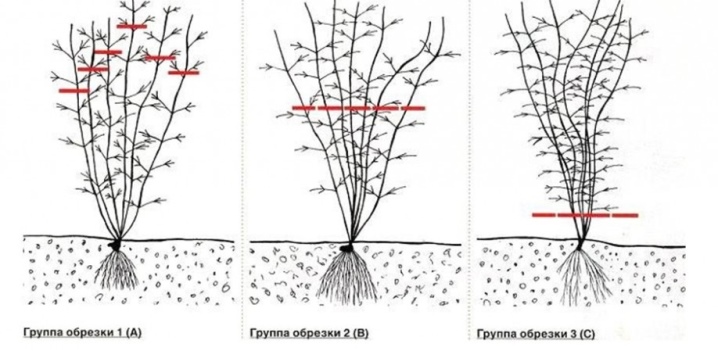
In addition to preparing for winter, every autumn it is necessary to do sanitary pruning of all bushes, removing all unnecessary, old and dead shoots. An important part of this work will be the removal of all dry leaves from the bush and from the ground, after which they are completely destroyed. It is important to carefully examine the bushes in order to identify diseases of the culture in time. You need to trim clematis correctly, taking into account the characteristics of the variety, because some specimens need to cut off almost all shoots, while others should have 1-2 buds, from which growth and flowering will take place next year. If the variety is unknown and the bush grows only for the first year, then it is best not to cut off the shoots and cover the plant completely, but in the spring to examine it and find out what has survived and what has dried up.
For mature plants, formative, sanitary, and winter pruning must be carried out continuously to maintain a healthy crop. For young clematis preparing for their first winter, it is recommended to remove all shoots, leaving hemp 30 cm long.
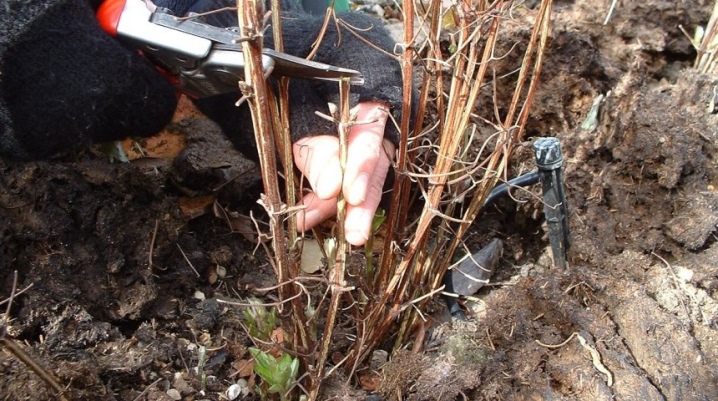
After the bush has overwintered, it begins to enter the active growth phase. During this period, it is important to carry out formative pruning on time and correctly, removing all poorly developed and affected shoots. By removing all that is superfluous, you can give the bush the opportunity to focus on active growth, as a result of which clematis drives out new lashes, on which flowers appear over time. It is also important to remember about the annual sanitary pruning, which prevents the development of diseases.
If you do not have experience in caring for clematis yet, then you can carry out universal pruning, which involves dividing the shoots into three parts:
- the first part is shortened so that the height of the branches does not exceed 30 cm;
- the second part has a shoot length of up to 1 m;
- the third part is left intact, only the tips are shortened slightly.
With the help of such pruning, it is possible after a year to track the plant's reaction to each of the exposure options. The part that grew best and bloomed earlier than all, will become a model for future measures to prepare the shrub for winter.
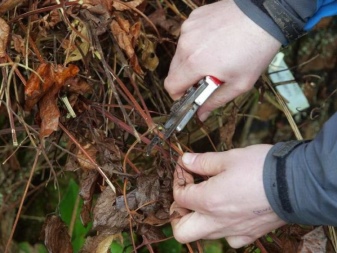
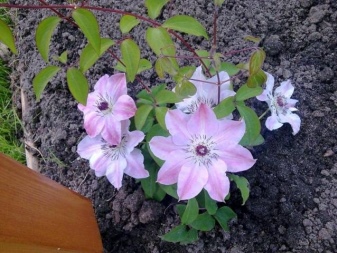
How to cover clematis?
To preserve clematis bushes in winter, they must be covered for the winter. An important component of preparation for wintering will be the creation of absolutely dry conditions for it. Although the bush is sensitive to cold, it suffers much more from waterlogging. In order not to have problems in the future, it is better to cover the bushes only in sunny and dry weather, when the ground is completely dry.
Shelter should not be carried out at certain times, but depending on weather conditions. As soon as the soil begins to freeze and the temperature of -5 degrees is stable outside, this is the most opportune moment for work. The plant overwinters well if the preparatory measures were performed correctly, and even frosts down to -45 degrees will not have serious negative effects on clematis.

It is necessary to prepare the bush for the winter period in advance in order to cover it and hide it from frost at any time, otherwise you can destroy a very beautiful plant. In the spring, you should not rush to throw out the bush if it has not overwintered, because in 1-2 years it will most likely grow from the root and will again delight with its flowering. To take care of the plant correctly, you need to prepare its shoots by cutting them taking into account the age and place of flowering.
Clematis, which bloom on the shoots of the current year, are pruned right down to the ground, which simplifies the covering procedure, which boils down to hilling the bush. To protect the plant from cold and moisture, you need to pour a hill of earth on top, which will rise above the ground by at least half a meter. So that the soil does not heat up, it is better to cover it with humus or peat. Young bushes can be additionally insulated by placing them in roofing felt or burlap.
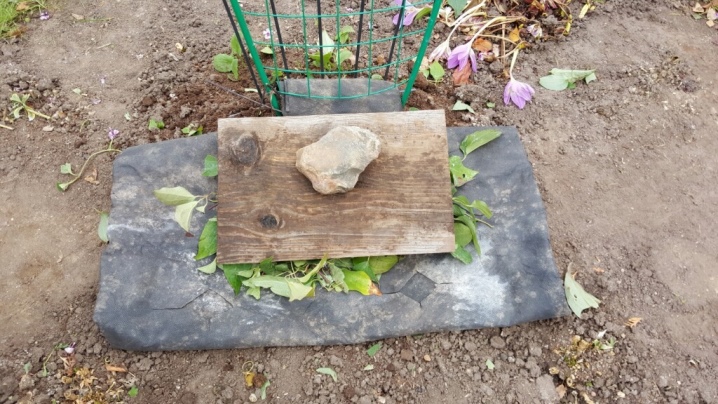
As for the shelter of the bushes that bloom on last year's shoots, then a more complex scheme is needed.
- Near the base of the bush, you need to fill a hill of peat or dry soil. It is worth setting up traps and traps for rodents - those who like to climb into the covering material.
- Spread spruce branches or boards around the plant to create a dry layer. Other materials can be used for this, the main thing is that they cope with the set goal.
- The shoots must be twisted and laid out on the base.
- On top of the branches, products are laid out, which form an air cushion. It can be pieces of wood, reed or reed mats, a wooden box.
- Above it is necessary to place a dense material that will not let moisture through. It is important to place it so that niches for ventilation are formed.
- In a snowy winter, the top layer will be covered with a snowdrift, and if there is little precipitation, then it is worth placing spruce branches or putting another layer of earth, peat or sawdust on top.
The correct shelter of clematis gives a high chance that the bush will overwinter well, with the onset of spring it will quickly grow and will please with massive flowering. When caring for a plant, it is important not only to properly cut and cover it, but also to open it after wintering, doing it gradually.

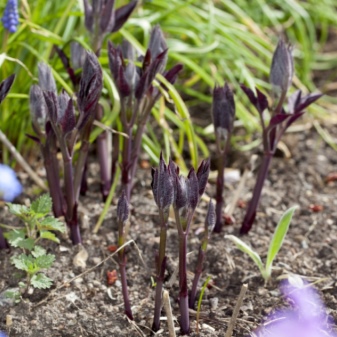
Wintering of different varieties
There is a wide variety of clematis varieties, which differ in the height of the bush, the size and shade of the flowers, and the flowering time. Before planting this plant on the site, it is worth choosing the right variety so that it feels comfortable in a certain area. In addition to the main parameters, it is worth paying attention to the plant's resistance to frost. At the moment, these are the most winter-hardy varieties.
- "Abundance" - a variety originally from France, has red or pink flowers. Grows from 2 to 4 meters in height. The winter hardiness of this plant ranges from 28-34 degrees below zero.
- "Avangard" - a variety obtained by chance, but entrenched due to abundant flowering and unusual flowers of red-pink color.
- "Azur Ball" - a new variety with double flowers of a light blue hue. Grows up to 2 meters. The maximum allowable temperature for comfortable wintering should not fall below -30 degrees.
- "Ai-Nor" - the variety was bred in the 70s, unpretentious, blooms well, grows up to 2.5 meters in height, the flowers are large, pale pink. A comfortable wintering temperature for him will be from -1 to -20 degrees.
- "Alana" - a variety bred in New Zealand, the color has the reddest shade of the existing ones. It blooms beautifully, but not too profusely.
- "Albina Captivity" - a variety with white flowers with an unusual oblong petal shape. This plant is able to withstand temperatures down to -40 degrees.
- "Alyonushka" - This is the most popular variety, unpretentious, well-blooming, frost-resistant. For full growth and development, he needs a support to which the bush is tied. The flowers are pink-purple.
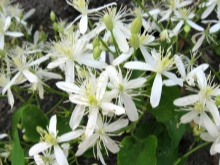
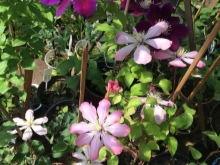
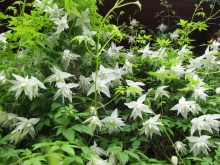
The winter hardiness of each variety can vary depending on the characteristics of the plant, therefore they can be planted in different territories, but always taking into account the temperature indicators of the area in winter.
If we talk in general about the frost resistance of clematis, then it is imperative to take into account the following nuances.
- Plants that bloom on the shoots of this year are most susceptible to the negative effects of frost. If the bush is not cut, then frosty weather will damage a certain part of the shoots, which will be forced to be cut off by gardeners in the spring.
- Clematis blooming on last year's shoots are more frost-hardy. If old shoots freeze, then young vines will bloom in spring, albeit with a slight delay.
- Varieties that winter well, do not need to preserve last year's shoots and simple hilling is enough.
- Adult plants, which are held on supports, may not be removed from them at all, but laid on the ground and covered with a film. The peculiarity of this method is that the leaves are not removed, but remain on the bush. In the absence of diseases, this does not harm, but in the presence of some kind of disease, the bush will die.
The popularity of clematis does not fade, and therefore you can find tall representatives of this plant on arches and partitions, as well as in the company with tall shrubs that bloom in the open field in spring. Low-growing plants are very popular for use in mixborders in the company of roses.
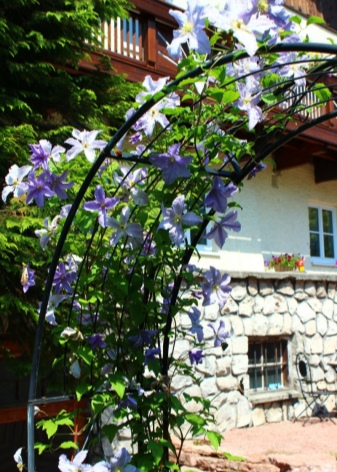

See below for preparing clematis for winter.







































































































The comment was sent successfully.